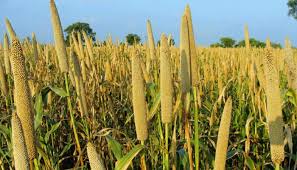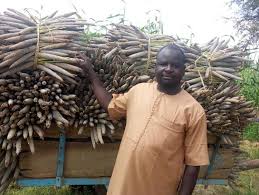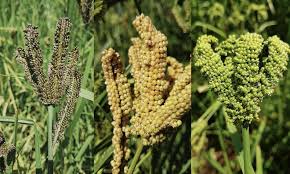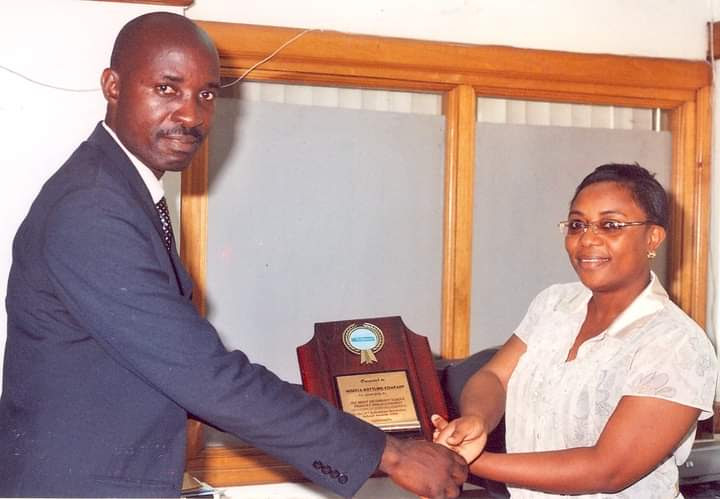![]()
If you’ve landed on this article page, you’re probably searching for a
good business idea—an idea that’s light on the pocket but heavy on
returns, promising both a fulfilling journey and potential profit.
|
Millet Farming in Nigeria: A Complete
Guide for Beginners
As a beginner in the world of agriculture, you may be seeking a
crop that offers both economic potential and resilience in the
face of climate change. Look no further than millet, a versatile
and nutrient-rich cereal grain that has been cultivated in
Nigeria for centuries.
Millet’s Nutritional Value: Millet is a powerhouse of essential
nutrients, including protein, fibre, vitamins, and minerals. Its
high nutritional value makes it a valuable addition to the diets
of many Nigerians, particularly in regions where malnutrition is
a concern.
Cultural and Traditional Importance: Millet has deep cultural
roots in Nigeria, playing a significant role in traditional
cuisines and ceremonies. Its cultivation and consumption are
woven into the fabric of many communities, making it a crop with
immense cultural significance.
Land preparation and soil requirements: Land Preparation: Proper
land preparation is crucial for successful millet cultivation.
This includes clearing the land of debris, tilling the soil to
improve aeration and water drainage, and creating ridges or
raised beds to facilitate better root development and water
management.
Soil Requirements: Millet can thrive in a wide range of soil
types, from sandy to loamy soils. However, well-drained soils
with a slightly acidic to neutral pH are preferred. Conducting
soil tests can help determine the soil’s nutrient levels and pH,
allowing for appropriate soil amendments and fertiliser
applications.
Soil Amendments: Incorporating organic matter, such as compost
or animal manure, can improve soil structure, water-holding
capacity, and nutrient availability. Additionally, applying lime
or other soil amendments may be necessary to adjust the pH of
the soil to the optimal range for millet growth.
Planting and crop management
Seed Selection and Treatment: Obtain high-quality millet seeds
from reputable sources, such as certified seed companies or
local agricultural extension services. Consider treating the
seeds with appropriate fungicides or insecticides to protect
against diseases and pests during the early growth stages.
Planting Methods: Millet can be planted using various methods,
including broadcasting, dibbling, or using a seed drill. The
choice of planting method will depend on factors such as farm
size, available resources, and local practices.
Spacing and Depth: Proper seed spacing and planting depth are
essential for ensuring optimal plant growth and yield. Consult
local agricultural experts or seed company recommendations for
specific guidelines based on the chosen millet variety and
environmental conditions.
Crop Rotation and Intercropping: Practicing crop rotation and
intercropping can help maintain soil fertility, reduce pest and
disease pressure, and maximise land use efficiency. Millet can
be rotated with legumes or other compatible crops while
intercropping with cowpea or groundnut is a common practice in
Nigeria.
Fertiliser Application and Nutrient Management
Soil Nutrient Analysis: Before applying any fertilisers, it is
crucial to conduct a soil nutrient analysis to determine the
specific nutrient requirements of your millet crop. This will
help ensure optimal fertiliser application rates and prevent
over-fertilisation or nutrient imbalances.
Organic Fertilisers: Incorporating organic fertilisers, such as
compost, animal manure, or green manures (e.g., legume cover
crops), can provide a slow-release source of nutrients and
improve soil health over time.
Inorganic Fertilisers: Inorganic fertilisers, particularly
nitrogen, phosphorus, and potassium (NPK) formulations, may be
necessary to supplement organic sources and meet the specific
nutrient demands of your millet crop.
Harvesting and post-harvest handling: Determining Maturity and
Harvest Timing: Recognising the signs of maturity and
determining the optimal harvest time is crucial for maximising
yield and quality. Indicators of millet maturity include dry and
discoloured leaves, as well as grains that are firm and hard.
Harvesting Techniques: Millet can be harvested manually or
mechanically, depending on the scale of your operation. Manual
harvesting involves cutting the panicles (grain heads) or the
entire plant, while mechanical harvesting utilises specialised
equipment like combine harvesters for larger-scale operations.
As a beginner in millet farming, you stand at the crossroads of
opportunity and innovation. By embracing sustainable practices,
leveraging technology, and fostering collaborations, you can
contribute to Nigeria’s food security, economic growth, and
environmental sustainability.
Get our Practical Training Guide on How to start a Millet
Farming in Nigeria. This complete guide will equip you with the
knowledge and practical strategies needed to embark on a
successful millet farming journey in Nigeria. This comprehensive
guide delves into the intricacies of finger millet farming in
Nigeria, providing invaluable insights and strategies for
maximising yields, optimising resources, and tapping into the
burgeoning market demand for this ancient superfood. From site
selection and soil preparation to harvesting and post-harvest
handling, this guide equips Nigerian farmers with the knowledge
and best practices necessary to cultivate finger millet
profitably and sustainably.
|







